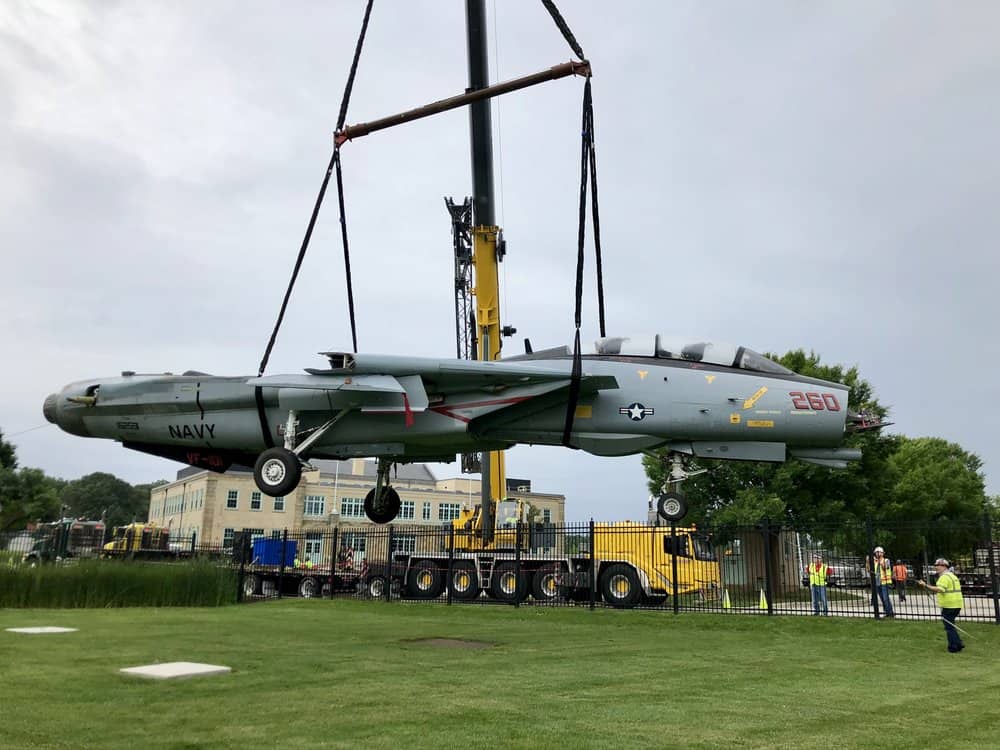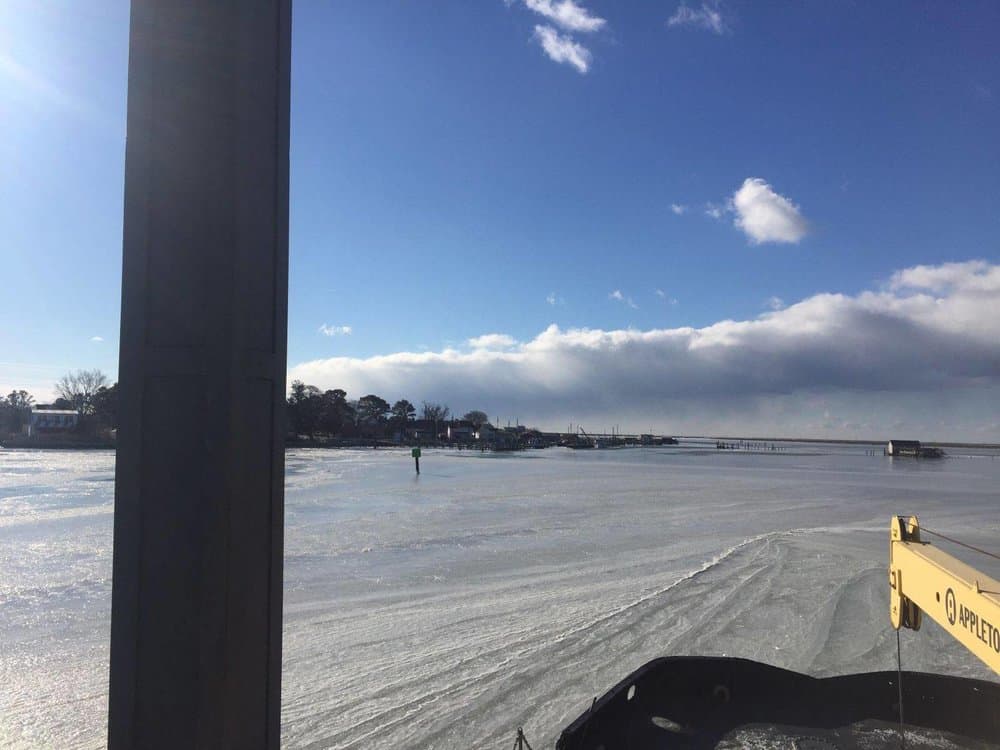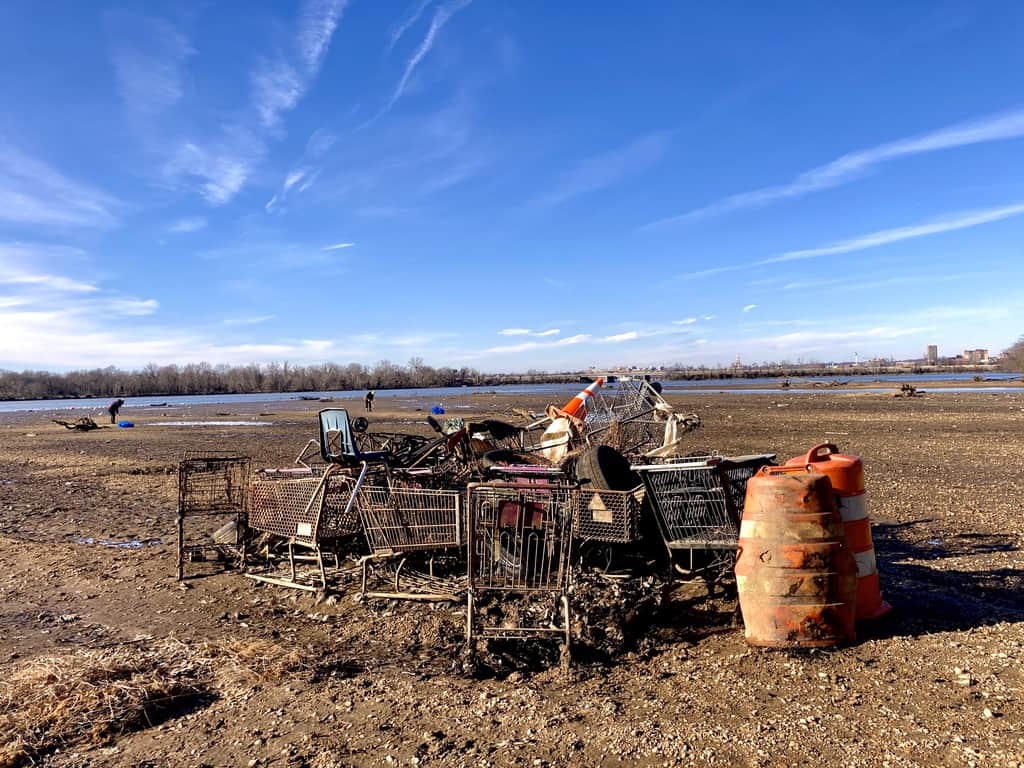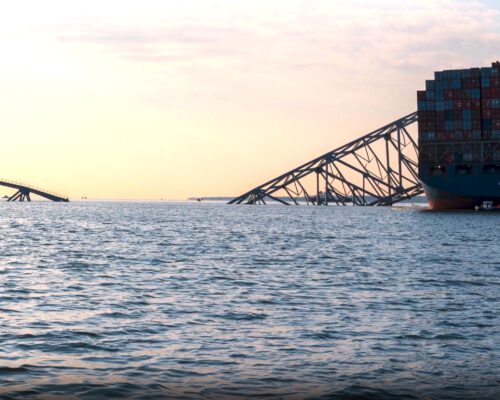Mark Mhley decided to stay on for one last job after retiring from the Navy last October. He had to coordinate the movement of two decommissioned naval aircraft to the naval aviation air park in Annapolis.
“It was born out of a desire for innovative ways to inspire the next generation of midshipmen to want to select naval aviation as a career,” Mhley said.
An F-14 Tomcat fighter plane finds a new home at the Naval Academy. Photo Courtesy Mark MhleyAfter noting the state of disrepair of some of the displayed aircraft at the Naval Academy, the retired Commander and Naval Academy instructor began speaking with the National Naval Aviation Museum in Escambia County, Florida, to locate decommissioned aircraft that could potentially find a new home in Annapolis. With the blessing of Academy Superintendent Vice Admiral Walter E. Carter Jr., the project was set in motion.
“Whether you are a VFW post or you’re the Smithsonian, if you would like to have a loaned naval aircraft, you go through this museum in order to get that,” He said.
Before long, the museum had identified two aircraft available for transport, an EA-6B Prowler at Andrews Air Force Base and an F-14 Tomcat at what used to be the Quonset Air Museum in North Kingstown, Rhode Island. This particular Tomcat had been flown by the admiral himself during the 1980’s and it quickly became a very personal project for Carter.
“It was difficult to find movers that were capable of dismantling, and then moving, and then reassembling an aircraft,” Mhley said. “One day a few of us sat down over at the Naval Academy and said, ‘You know, Joint Base Andrews is only 35 miles away. I bet you we could tow the EA-6B Prowler.’”
With the assistance of a Virginia Beach Navy SEAL team, the Presidential Support Unit Squadron at Andrews Air Force Base (also known as Air Force One Squadron), and the Naval Air Station Patuxent River NAVAIR team, Mhley and his team were able to transport the Prowler from Andrews Air Force Base to the Naval Academy.
According to Mhley, the movement was delayed only once by President Trump’s arrival and departure from the base and the entire operation cost the Navy only $450 in overtime for the state troopers picked up along the way for escort.
The Tomcat however, would be a far more challenging task.
“An F-14 Tomcat with its wings removed is a 22-foot wide, two-lane movement. In other words, we shut down two lanes of traffic the entire route of transit,” Mhley said.
After enlisting the help of retired Navy Commander Chuck Mosely and his company, All Coast Aircraft Recovery, Mhley secured permits to transport the Tomcat through Rhode Island, Connecticut, New York, Pennsylvania, and Maryland. This process took several months.
Once the Tomcat was disassembled in Rhode Island, two trucks, one for the aircraft and one for the removed wings and stabilizers, brought the aircraft all the way to the Naval Academy. Mhley’s team spent about two and a half days making repairs on the aircraft and removing cockpit components for museum display.
After a year and a half of logistics and transportation, the whole project was capped off with a beer at Carter’s house, where the Tomcat’s radar antenna was taken to be put on display with other artifacts.
—Charlie Youngmann




